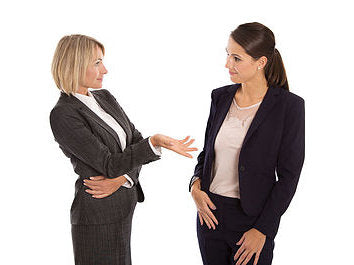
Body Language - The Foundation of Human Communication
Long before verbal communication, our primal ancestors communicated solely through the use of body language. Amazingly, this nonverbal communication was so effective that it allowed us to express our emotions, desires, needs and fears through some of the most perilous time periods of our existence.
Far from simple hand gestures, nonverbal communication encompasses everything from non-linguistic noises (grunts, sighs etc.), facial expressions, physical contact (hugs etc.) body posturing and physiological changes (flushed face, paling, shivering).
Non-verbal Communication in Babies
We still use and understand all of these nonverbal expressions today; in fact, we are born with an ability to express and understand nonverbal language! From the moment we are born, we react to our bodies need for food, comfort, or warmth by crying. A mother’s instinctive response to this crying is due to an inbuilt understanding of what our babies need – this is one of the most amazing and ancient forms of nonverbal communication known to man and has ensured our species survival for thousands of years.
Similarly, many new parents quickly realize that their babies are extremely sensitive to their emotions, displaying unsettled behavior when said parents are stressed out, upset or angry. No, this isn’t some type of amazing psychic gift; it’s a baby’s highly attuned ability to read our nonverbal cues!
Fight or Flight Response
We carry this innate skill into adulthood, and our ability to almost instantly mirror the reactions of those around us is a testament to our remaining survival instincts. For example, when we see fear in the body language of people around us, we subconsciously react by taking on a fight or flight response. Like a flock of birds panicking and flying off all at once, this reaction was – and still is – essential to avoid danger that we haven’t yet seen ourselves.
In the past, this may have been a crouching sabre toothed tiger, spotted by somebody else whose expression has prompted the whole tribe to run. These days, it might be an out of control car speeding towards a group.
The Brain and Body language
The part of the brain called the limbic system is the reason our nonverbal reactions are instant. The limbic system causes our body to react to a need, feeling, thought or intention before the conscious brain even knows what’s going on, so – whether we like it or not – we express our true feelings nonverbally, giving others a very brief glimpse of the truth. Amazingly, we can learn (or relearn) how to read many of these brief cues quite easily with a bit of training.
While the act of reading body language isn’t failsafe against those who are trying really hard to hide their feelings, it is an extremely beneficial tool for those wishing to better understand people in their familial, social, and work lives. Learning body language will also help you to show confidence and other intents during interactions.
Functions of Non-Verbal Communication
To a person with a keen understanding of non-verbal communication and body language, these signals helps confirm if the person you’re talking to is being truthful or at least listening. By being able to use body language you can also be a more effective communicator.
- Reinforce your message – it helps strengthens the message, actions and gestures help convey a stronger message
- Substitution – non-verbal communication can be used to convey a message when you are unable to express an idea verbally
- Repetition – body language has a meaning or its own and can be used to repeat previous messages
The Importance of Body Language
Unfortunately, most of us have lost the ability to read these nonverbal cues as well as we once did. Sure, we still quickly tune into the most important cues via ‘gut instincts’ and subconscious reactions; however, we are awfully bad at judging hidden expressions with our conscious minds. By hidden expressions, I mean those that others are deliberately attempting to hide from us.
Fortunately, it is even more difficult for a person trying to deceive us or hide true feelings from us to suppress their body language. Sure, they may put on a poker face, but their body will already have let out a signal before they are even aware, they need to hide it!
If you’re interested in acquiring basic body language reading skills, check out our Body Language Basics Online Short Course!